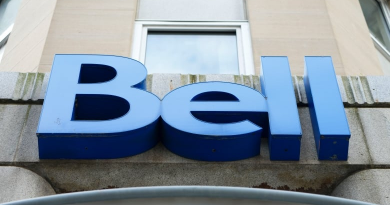Nunavut officially takes over land, resource responsibilities from feds
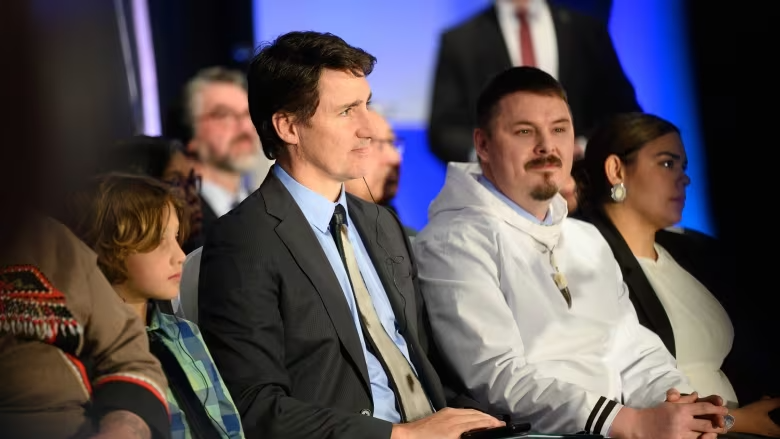
· CBC News
Prime Minister Trudeau signs agreement for largest land transfer in Canada’s history
Nearly 25 years after Nunavut became a territory, it has signed a final agreement with the government of Canada to have the final say over a long list of decisions that were, until now, usually made in Ottawa.
Prime Minister Justin Trudeau, Premier P.J. Akeeagok and Nunavut Tunngavik Inc. president Aluki Kotierk signed the agreement at a ceremony in Iqaluit this afternoon.
It’s the largest land transfer in Canada’s history, Trudeau said — two million square kilometres of land and water.
The 239-page document outlines how Canada will give control over Nunavut’s land and resources to the government of Nunavut — a process known as devolution.
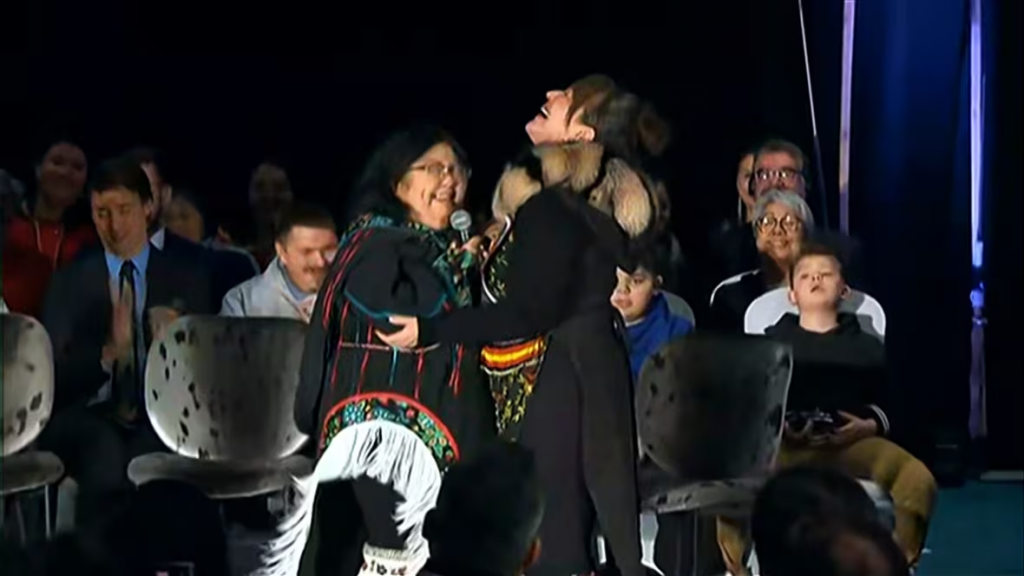
The agreement officially begins April 1, and the parties will have until April 2027 to get it all done.
“It’s high time. It’s a turning point for Nunavummiut,” said Paul Quassa, a former Nunavut premier and land claims negotiator.
Speaking just before the signing, Trudeau called it a “historic” day.
“A lot of work has gone into making today possible,” he said. “Leaders, negotiators, officials of many stripes have all worked hard for many years to for the same goal: for Nunavummiut to have increased control for decisions on their land, waters and resources.”
Nunavut first become a territory in 1999, and has slowly been negotiating with the federal government to have the final say over how many decisions are made. That’s a process that both the Yukon and N.W.T. have undergone, as well.
One final area to be negotiated for Nunavut was land and water management, which covers resource development. That negotiation process began in 2008 and the territory signed an agreement-in-principle on devolution in 2019.
Quassa was part of the land claim negotiations that created Nunavut. The signing of devolution, he said, is something he’s imagined for a long time.
“It’s like honey, I guess — it’s sweet,” Quassa said. “This is something I’ve looked forward to since the day we started negotiating with the Nunavut government.”
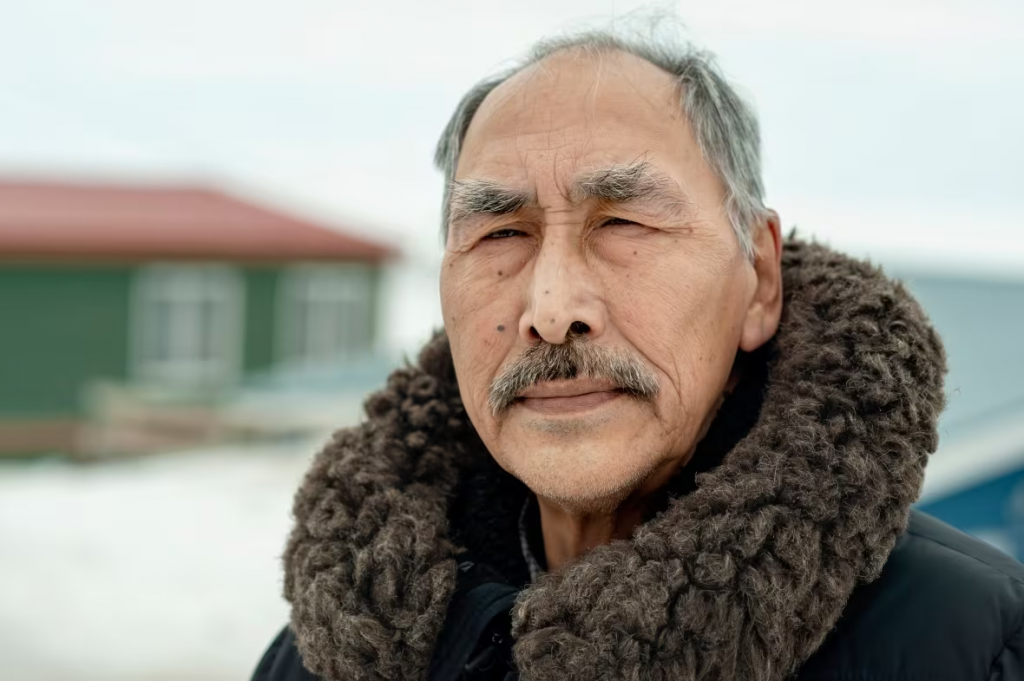
The devolution agreement also finalizes the terms for transferring administrative control of Nunavut’s Crown lands and resources to the territorial government, and outlines the conditions of the post-transfer period.
As of the transfer date, government of Canada employees whose jobs become territorial responsibilities, and who work in Nunavut, will be offered jobs with the territorial government.
For its part, Nunavut Tunngavik Inc. will be in charge of a post-devolution human resources strategy, to ensure Inuit are hired to fill roles within the Nunavut government.
Right now, the government of Canada makes all the final decisions for the development of minerals, oil and gas on Nunavut’s public land.
Devolution will change this, giving Nunavut the final decision-making authority.
“We’ll decide our own future,” Premier P.J. Akeeagok said. “Before this, it was Ottawa who had the final decision over whether a project would advance.”
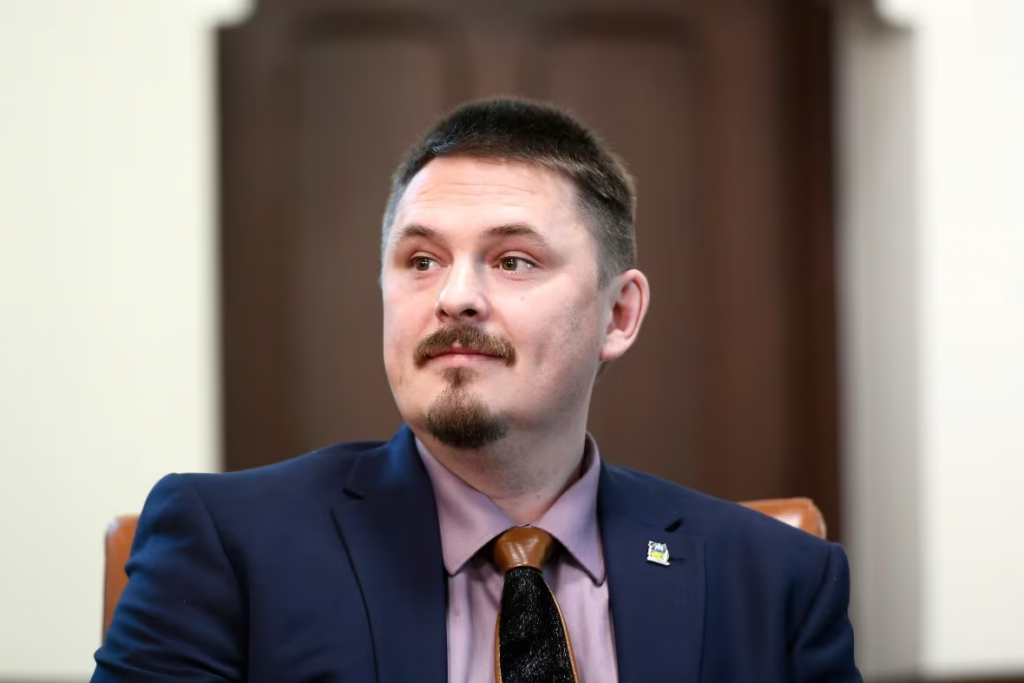
It will also give the Nunavut government greater authority to collect royalties from development projects.
Is Nunavut ready?
Joe Savikataaq, Nunavut’s premier from 2018 to 2021, said Nunavummiut likely won’t see any immediate change now that devolution has been signed.
“It won’t happen overnight,” Savikataaq said. “They don’t flick a switch and we just take over responsibilities tomorrow. It will be a long, drawn out process.
“It’s another step in Nunavut growing up,” he added.
Savikataaq also pointed to the Nunavut government’s longstanding struggle to fill vacancies in its various departments and its failure to meet its Inuit employment goals.
He said taking on more staff, and adding new departments, will be difficult but that it needs to happen.
“If we weren’t ready, then we shouldn’t have been negotiating,” he said.
Quassa agreed.
“This is something that we had envisioned,” Quassa said. “We are becoming an important player within Canada.”
Akeeagok said it’s about time decisions for Nunavummiut are made by Nunavummiut.
“Will it be challenging? Absolutely,” Akeeagok said. “We’ve always had a vision of Nunavummiut making decisions for their future.”
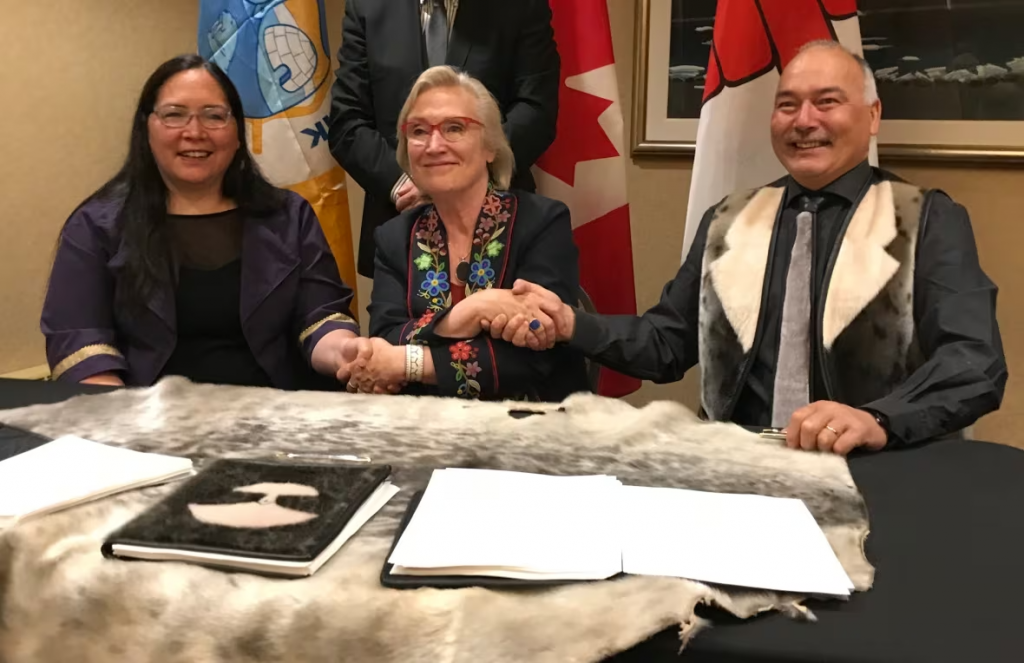
A deal 25 years in the making
As part of the transfer, Nunavut will receive an additional $85 million a year from the federal government. Canada will also provide one-time funding to the territory: $67 million for transitional activities, and $15 million for training.
It also means several pieces of legislation will need to be altered or repealed to give power to the Nunavut government.
That includes repealing or replacing the Nunavut Act, a federal law, to give the territory control over public lands and rights to waters.
Public lands include any onshore lands that currently belong to the government of Canada, and includes beds and bodies of freshwater, minerals, oil, gas and buildings and structures
The Nunavut legislature’s power will also be expanded to include the management of lands and resources in Nunavut, including laws about the exploration and exploitation of non-renewable resources.
It also means a territorial minister will be the final decision-maker on project proposals under the Nunavut Planning Act
Savikataaq said he also pushed for negotiating on offshore resources at the same time. The final agreement states that those negotiations will begin post-signing.
“Some of those negotiations were tough,” he said.
Savikataaq, who represents Arviat in the Legislative Assembly, also urged the government to transfer some of the jobs created through devolution to other Nunavut communities.
“Not all the jobs should be going to Iqaluit. We should be seeing jobs in communities,” he said.
N.W.T.’s devolution agreement took effect in 2014. Yukon’s took effect in 2003.
Related stories from around the North:
Canada: Nunavut is signing a devolution deal. Here’s how it worked in the Yukon and N.W.T., CBC News

